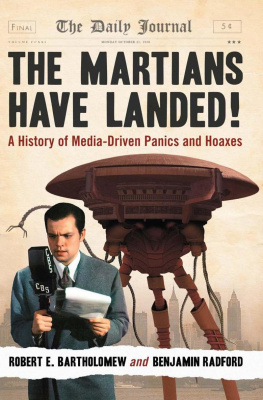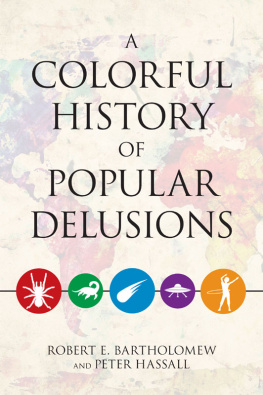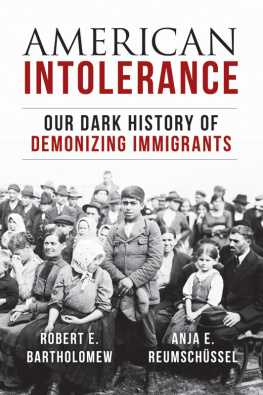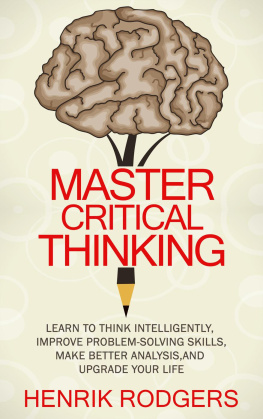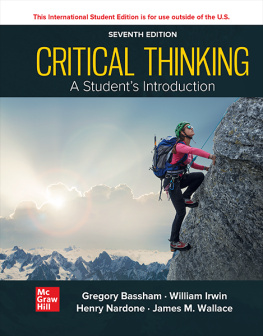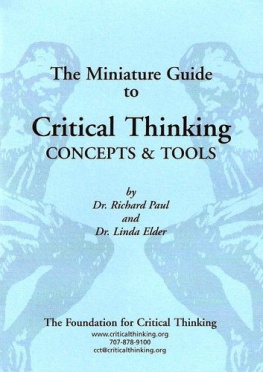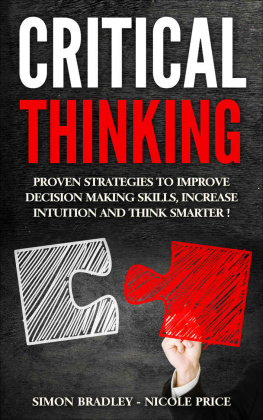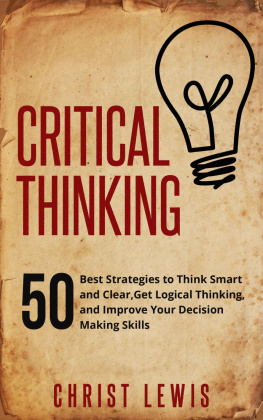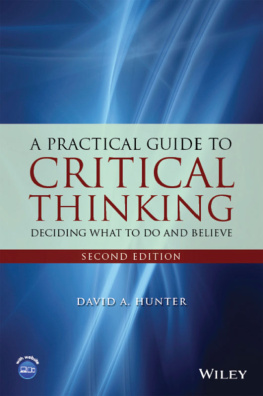ACKNOWLEDGMENTS
Portions of chapter 2 first appeared in R. E. Bartholomew, The Martian Panic Sixty Years On: What Have We Learned? Skeptical Inquirer 22, no. 6 (1998): 40-43. Part of chapter 3 appeared in R. E. Bartholomew, Before Roswell: The Meaning behind the Crashed UFO Myth, Skeptical Inquirer 22, no. 3 (1998): 29-30, 59. Some material in chapter 7 first appeared in R. E. Bartholomew, Culture-Bound Syndromes as Fakery, SkepticalInquirer 19, no. 6 (1995): 36-41. Parts of chapter 10 appeared in R. E. Bartholomew, Rethinking the Dance Mania, Skeptical Inquirer 24, no. 4 (2000): 42-47. Part of chapter 15 appeared in R. E. Bartholomew, Collective Delusions: A Skeptics Guide, Skeptical Inquirer 31, no. 3 (I997): 29-33. All material from Skeptical Inquirer is reproduced by permission of Barry Karr, Committee for the Scientific Investigation of the Claims of the Paranormal, P.O. Box 703, Amherst, NY 14226-0703.
Part of chapter 8 was originally published in R. E. Bartholomew and J. ODea, Religious Devoutness Construed as Pathology: The Myth of Religious Mania, International Journal for the Psychology of Religion 8, no. 1 (1998): 1-16. Parts of chapters 6, 9, and 14 first appeared in R. E. Bartholomew, Monkey Man Delusion Sweeps across India: Western Delusions Are No Less Bizarre, The Skeptic 9, no. 6 (2002): 13. R. E. Bartholomew, Commentary: Deviance, Psychiatry and RelativismAn Important Borderland, The Skeptic 8, no. 3 (2000): 36-40; and R. E. Bartholomew, Penis Panics: The Psychology of Penis-Shrinking Mass Hysterias, The Skeptic 7, no. 4 (1999): 39-43. They are reproduced by permission of The Skeptic Society, Box 338, Altadena, California.
A portion of chapter 12 appeared in R. E. Bartholomew, From Airships to Flying Saucers: Oregons Place in the Evolution of UFO Lore, Oregon Historical Quarterly 101, no. 2 (2000): 192-213. It is reproduced by permission of the Oregon Historical Society, 1200 S.W., Park Avenue, Portland, Oregon.
ABOUT THE AUTHORS AND CONTRIBUTORS
ROBERT E. BARTHOLOMEW, PH.D., has taught sociology in Australia at Flinders University of South Australia and James Cook University in Queensland. A former broadcast journalist and contributor to news organizations such as the Associated Press and United Press International, he has conducted ethnographic field-work in Southeast Asia on so-called culture-specific psychiatric disorders. He has published dozens of articles in scientific journals on various topics.
DAVID CLARKE holds a Ph.D. in English Cultural Tradition and Folklore from the National Centre for English Cultural Tradition at the University of Sheffield, where he teaches and serves as an honorary research fellow.
ROBERT LADENDORF is a freelance writer, newspaper columnist, and cofounder of the Rational Examination Association of Lincoln
Land (REALL), an Illinois-based pro-science, anti-superstition organization. A public affairs staff writer and editor for the Illinois Department of Transportation, he resides in Springfield, Illinois.
JULIAN ODEA received a Ph.D. in biology and serves as a research fellow in the Division of Archeology and Natural History at the Australian National University in Canberra.
BENJAMIN RADFORD is a freelance writer and the managing editor of the Skeptical Inquirer, an internationally refereed journal addressing issues in science and fringe science. He has been active in promoting critical thinking with a special interest in urban legends, Bigfoot, and mass hysterias. He has a Bachelor of Arts in Psychology from the University of New Mexico (1993).
STEVEN WHaLEIV has a masters in history from St. Michaels College in Vermont, and a doctorate in history from the University of Maine. He teaches in the Department of History at Castleton State College in Castleton, Vermont.
WHY DEVELOP A CRITICAL EYE?
I have no riches
but my thoughts.
Yet these are
wealth enough for me.
-Sara Teasdale
Like eating, breathing, and complaining about taxes, thinking is an activity that is typically taken for granted. In most schools throughout the world, students are taught three basic skills that will prepare them to function in society: reading, writing, and arithmetic. Although all of these areas require thinking, they do not necessarily involve critical thinkingwhat psychologist Dennis Coon defines as an ability to evaluate, compare, analyze, critique, and synthesize information. In some countries, authorities might not want pupils to develop critical thinking skills, as it may lead to challenges to long-standing political, religious, and social dogmas. Yet, in the United States and other countries where freedom and democracy are cornerstones of government and citizens take pride in making intelligent, informed decisions about every aspect of life, critical thinking is typically a small part of the school curriculum.
Each waking hour of each day, month after month, year after year, we have the opportunity to practice our thinkingfor it is a skill that involves such things as expressing opinions, discussing events, analyzing situations, and solving problems. Yet, for all of this opportunity to practice, few of us think with any concrete analysis or scrutiny of how we are thinking. Many educators neglect the importance of thinking about thinking. Many people assume that just because they have the capacity to think, they can think well. They may believe that thinking takes no effort. Certainly, we can all think to some degree; we couldnt function if we didnt. But there is a difference between thinking about things and thinking about them critically and analytically. An apt analogy is writing. For those who dont see much difference between ordinary ways of thought and critical thinking, there would be little difference between the simple sentences strung together by a grade schooler and the writings of William Shakespeare or Ernest Hemingway. Most people can write readable sentences, but the ability to write well takes time, effort, practice, and training. It is a skill; perhaps with some element of innate ability, but a skill nonetheless. Critical thinking is also a skill, and it can be learned.
This book is a series of case studies in critical thinking so readers can examine topics along with us to see where the inquiry leads. A benefit to this approach is that the topic is limited, and usually quite specific, allowing for a deeper analysis of the issue. At times readers may even fault our analyses of the topics presented. They may see other explanations, other avenues of inquiry. We welcome this, as it is the methodology of science. A hallmark of science is that assertions are subject to attack and revision. If readers question assumptionsthe publics, their own, or ourswe have succeeded in instilling a good foundation for critical thinking. We hope to challenge students to dig deeper into issues, to encourage people to develop a critical eye and ear, to help recognize faulty arguments in the world around them.
Critical thinking is a way of thinking and a tool of analysis that can be compared to the scientific method. Just as there are many ways to find out about the world, there are many ways to think about the world. But some ways are better than others; scientifically testing drinking water for lead or other toxins is better than letting others drink it and waiting for any negative results. In nature, for example, when our ancestors wanted to know why the sun rose and set, there was no sure way to find out, no scientific method to resort to. As a result, several explanations were put forth; one of them was reflected in mythology, that the sun was pulled across the sky by a flying chariot. We know now, of course, that sunrise and sunset are the products of the Earths movement around the sun, all the while rotating on its axis.


